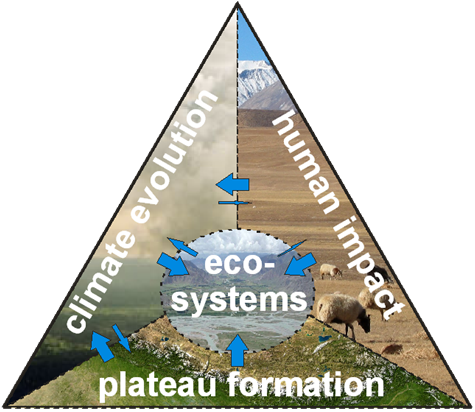Bachelorarbeit
„Are there grazing gradients in the Tibetan Highland pastures?” - The case study Kema
Marie-Eve Ringler (07/2012-01/2013)
Betreuer: Georg Miehe
Geography, Philipps-University Marburg
The impact of livestock grazing on the condition of the vegetation cover was studied on the Tibetan Plateau in an alpine meadow. The study area is dominated by zonal Kobresia pastures with azonal wetlands covered by Kobresia schoenoides. Due to the intensive livestock grazing, as the dominant form of land use, it was hypothesized that (1) there is a positive correlation between vegetation cover and distance from the settlements and consequently (2) a decline of the variance of the vegetation cover with increasing distance. Kobresia schoenoides wetlands are the primary and only source of forage for the livestock during the winter months. So, it was assumed that (3) a distinction between the variance of zonal Kobresia pastures and Kobresia schoenoides wetlands can be recorded. Based on high resolution remote sensing data derived from RapidEye sensor, the land-cover of the study area was distinguished into 5 classes. In accordance with the resultant vegetation map, distance related analysis of the vegetation cover was accomplished. Starting from a hot spot, along a grazing gradient - defined by increasing distance (0 to 3000 m), variances and mean values of the different land- cover classes were determined. No distance related dependencies according to the cover degree were found. Nevertheless, since variance within vegetation cover decreased significantly, grazing influenced the homogeneity of the landscape. To achieve an explicit statement about the influence of grazing on the vegetation cover, other ecological and climatic factors will have to be integrated in further studies.

